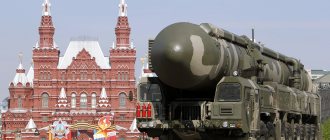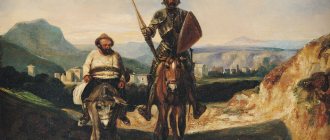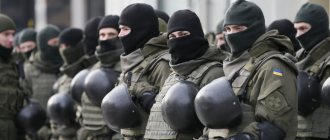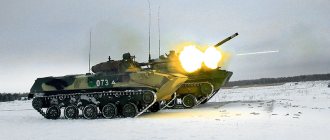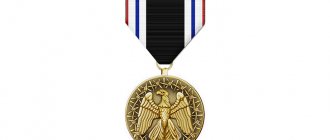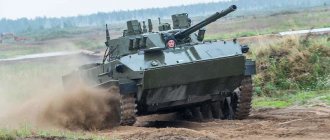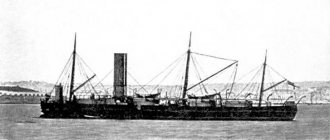Every real paratrooper doesn't have many holidays. One of them is Airborne Forces . In every city, on a certain day, streams of young people in vests and blue berets flock to the main parks of the city. As you know, there are no former paratroopers. Having once put on a vest, any of them becomes a representative of this friendly brotherhood for life.
Who are paratroopers
The main job of a paratrooper, at any time of the year and in any weather, is to land behind enemy lines and complete the assigned task. The Americans, speaking about them, claim that there are no barriers for Russian paratroopers, no matter where they are. Russian paratroopers know how to fight in all four elements, but their main habitat is the sky. It is for this reason that there is no one other than them who is so familiar with this element.
Their work cannot always be seen as in exercises with the mass landing of a large number of paratroopers. They are able to get to any point on the planet so quietly that it will be impossible to understand at what moment this happened. Thanks to new developments in the latest parachute systems, they can cope with the most impossible task. Their equipment is made with the latest technology.
Such equipment as backpack . It includes the items necessary to complete the combat mission. Such backpacks are sold in almost all military stores, but there are also online stores where you can easily order backpack . Officially, the airborne was formed in the Leningrad region in 1931, but the paratroopers carried out their first operation in 1941. It was then that support from heaven was needed. The paratroopers completed their first combat mission with honor.
Airborne Forces Day
August 2 is considered Airborne Forces Day. It was on this day in 1930 that a detachment of fighters capable of performing parachute jumps in open areas was formed.
This day begins with the fact that people in blue and white vests flock to the central park of any city in the vastness of Russia. They gather in company, remember their past years of service, not without strong drinks, of course, and then events can unfold in completely different scenarios.
Another side of the Airborne Forces is the meeting of former colleagues. It is on this day that they can put on a uniform, make eye contact with each other, and remember past exploits. Those who actually served in the Airborne have a negative attitude towards unpleasant situations that are not uncommon on this day. But most often, fights are organized by strangers who have nothing to do with these people.
The tradition of breaking bottles on the forehead also came for a reason. In fact, they have a very bad attitude towards alcohol in any form. Therefore, by such actions they show their attitude towards such drinks.
Paratroopers of all ages lay wreaths at the monuments to the fallen heroes of Russia. Instead of dead sons, their mothers do this. Sometimes they take part in the parade procession holding portraits of their fallen comrades. They have their own immortal regiment. Paratrooper's Day takes place on August 2. On this day, the words “Glory to the Airborne Forces” can be heard from everywhere.
Dembel uniform
The tradition of leaving for demobilization in a special uniform dates back to the times of the Soviet Union. This form was prepared in advance, six months in advance. Now you can order it on certain websites on the Internet. The uniform is decorated with all sorts of additions, such as aiguillettes, insignia, and rivets. There is also a demobilization version of the VKS uniform; it has its own characteristics. Any demobilization is of two types, strict and exclusive. The difference between them is the degree of finishing with various accessories.
Find out: The rank of captain of the Navy, what the first, second and third ranks mean
The demobilization form of the VKS may include the following details:
Since the founding of this type of troops, the uniform of the Airborne Forces was no different from the clothing of the Red Army Air Force or special purpose air battalions. The set of clothes for a USSR intelligence soldier included:
- Leather or blue-gray canvas helmet.
- Moleskin overalls (could be either leather or blue-gray canvas).
- The collar of the overalls was equipped with blue buttonholes, where insignia were sewn.
Already in the forties, the military uniform for aerial reconnaissance was changed to avisent jackets with trousers. The pants had huge patch pockets. The winter clothes of the USSR paratroopers were insulated with sheepskin uniforms: a brown or dark blue fur collar, which was fastened with a zipper.
The military clothing of the forces was divided into 4 groups:
- summer uniform for every day for sergeants and soldiers;
- summer casual clothing for sergeants, airborne cadets, soldiers;
- summer casual clothing of cadets, where buttonholes and shoulder straps indicated the branch of service;
- winter clothing for sergeants, cadets, military builders, where buttonholes, shoulder straps and a badge on the sleeve are according to the branch of service.
In addition, the military uniform in the USSR had to take into account the climatic features of the area where the troops were located. For example, in the Finnish war, a soldier’s winter clothing was supplemented with:
- hats with earflaps,
- padded jackets,
- cotton pants,
- white camouflage robes and hoods.
The rest of the military clothing in the USSR, for example, for rifle units, looked like a simple budenovka and boots. In addition to their canvas helmets, the paratroopers had large goggles for pilots. This attribute was issued due to the fact that they often had to parachute. If you take a close look at the photo or film materials of those times, you can see that even ceremonial clothing could consist of helmets and glasses, and a parachute jumpsuit.
The military uniform of a USSR officer had a cap with a chin strap for parachute jumping; ordinary Red Army soldiers hid their caps in their bosoms. There were no special shoes for jumping, so felt boots often fell off the feet when the parachute opened. Officer's shoes also presupposed the existence of fur boots.
The usual uniform of the Airborne Forces in Russia differed from other troops only in blue buttonholes; officers had gold trim around them. The piping on the buttonholes of political workers, sergeants or privates was black; this was considered a kind of office option. Officers were also distinguished by blue piping on the collar and the upper edge of the cuffs, and side stitched seams on the riding breeches. Caps with blue piping and red stars or dark blue caps with red enamel stars - all this was typical for the leadership of the Airborne Forces.
During the existence of the Soviet Union, the Ukrainian Airborne Forces were no different in their military uniform from the Russian troops; one single template was in effect throughout the entire USSR. After the collapse of the state, Ukraine had to “redraw” not only the meaning of the type of troops itself, but also the form of intelligence. Until recently, the airborne forces of these two countries could only be distinguished by different stripes, which depicted the coats of arms of different countries. Ukraine's uniform depicts a trident on a yellow-blue background.
Why do they bathe in fountains?
It is on the day of the paratrooper that you can watch a very unusual sight, like swimming in fountains. But where did this tradition come from? In fact, even the paratroopers themselves do not know the origins of this custom. But, of course, everyone who served in the airborne forces is obliged to comply with them. There are at least 3 versions of why paratroopers do this:
- Church version. It so happened that the day of the Airborne Forces coincided with the celebration of the great Orthodox holiday of the Prophet Elijah. Noticing this coincidence, the paratroopers conditionally made the latter their patron. It is believed that after August 2 the water turns green and it is not recommended to swim in it. Therefore, paying tribute to the prophet, with the hope that this will become a talisman against any failures, the paratroopers dive into the fountain.
- Love for the sky. Only a person who loves the sky can become a paratrooper. Even when reflected in the water, they remember him. According to this version, dipping in water brings them closer to the sky, symbolizing endless love for it.
- August 2 is usually a very hot day. Therefore, plunging into the fountain is a common thing for them, especially since it has become a tradition. The largest concentration of these desperate guys can be seen in Moscow in the Friendship of Peoples fountain at VDNKh. Having put on vests , picked up a flag and warmed themselves up with strong drinks, they dive into the sky, or maybe just cool down. From the outside it certainly looks strange, but this is their holiday, so you can forgive them for such non-standard behavior.
Airborne flag
Airborne Forces flag has a symbolic meaning; it was developed in 2004. The flag is a panel in two colors - blue and green.
The lower part of the green color symbolizes a pure peaceful land. The blue upper part is reminiscent of the element of air that all paratroopers are in love with - the sky. In the central part of the flag is a gold-colored paratrooper with flying planes on the right and left sides.
On official holidays, the flag can be seen in many military units. It is raised at all events dedicated to the holiday. But not only there you can see this multi-colored cloth. Many former military personnel serving in the Airborne Forces a flag on their windows or on the flagpoles of private houses in memory of her It is not uncommon to see the flag on the paratroopers' gate.
Problem: preservation of demobilization uniform
Anyone who served in military service knows: it is not so difficult to prepare such military clothing as to preserve it. What is the problem? It exists in the case of formal relations between company officers and soldiers.
The charter gives superiors the right to monitor subordinates' compliance with the dress code. Commanders can and must periodically check the personal belongings of soldiers and sergeants, seizing items not provided for by regulations. Theoretically, demobilization uniforms also fall into the risk group. Usually, demobilization personnel store it in the company storeroom (kapterka) in their registered compartments.
And although everyone knows that a soldier will not wear such clothing during combat service, and that such violation of uniform by demobilization should not be expected, commanders often confiscate and destroy such clothing.
Is it smart in a purely human sense to put such pressure on subordinates? Not at all. Reasonable construction of superior/subordinate relationships presupposes respect for the human person. Indeed, why traumatize a person who expressed pride in his service by creating a personal uniform? A reasonable boss will try not to notice this little detail, turn a blind eye to it, warmly thank the soldier for his service, and tell the demobilized man, stunned with happiness, how to get home without any problems.
On the other hand, the confiscation of the demobilization uniform by the commander is justified if it implies obvious mockery of the regulations, a mockery of the army way of life.
Blue splashed
These words from a song about paratroopers became the anthem of the entire airborne fraternity. It is known by heart by thousands of guys who have passed, are passing and who are about to serve in the airborne forces. But where did this song come from? On Airborne Forces 1973, this song was first performed by the Blue Berets group, which consisted entirely of airborne troops.
We came up with the words of the future anthem ourselves, they came from the heart. After all, only a real combat paratrooper will be able to convey in such a succinct form the entire essence of service in these troops. Love for the sky, which cannot be replaced by anything, and the great importance of the attribute of all paratroopers, the blue beret.
The song was accepted without hesitation, and soon it could be heard everywhere. Where the paratroopers gathered to rest, and even with a guitar, the anthem of the airborne troops, “Sineva,” was sure to sound. It still sounds, and it seems that it will continue to sound as long as the landing force exists, and these troops very much respect traditions and what is passed down from generation to generation.
Demobilization uniform of sailors
Please: Navy ceremonial flank, already equipped with a tunic, badges, and aiguillette. Made to order, plus (optional) your wishes.
The service is amazing: there is even an interest-free installment plan and (which is important for conscripts) free storage of finished products in a warehouse. Standard delivery time - 2 weeks, expedited - 1 week
However, buying is not a trick! The thoughtful reader, of course, is interested in how the Navy demobilization uniform is made. We are quite ready to answer this question:
- the hems of pea coats, tunics, and overcoats are shortened;
- an additional chevron of the “Navy” type is sewn on, etc.;
- The naval belt plate is being finalized (the corners are ground down, a bend is given, the anchor is polished);
- the belt itself is wrinkled in a special way “like leather” and painted brown;
- shoulder straps with two capital letters of the name of the fleet are made;
- the peakless cap is given a slope, a wire rim is inserted into it for lateral curvature;
- the trousers flare downwards to the width of the shoes and taper at the hips (the latter is an immemorial naval tradition).
By the way, the demobilization uniform of the Marine Corps is similar to it. It additionally includes replacing the flannel stripes with similarly shaped fragments carved from red organic glass. Aiguillettes are additionally installed on the jacket. The vertical surface of the shoe sole was ground down until it was inclined.
The motto of the paratroopers
There are several mottos in the airborne forces, each division has its own. The essence of them all comes down to reflecting the heroic nature of each paratrooper and their cohesion. But there is one “Nobody But Us” that brings together everything to capture the entire meaning of their service.
In fact, this corresponds to reality, because they are able to get to places where it is impossible to reach without swimming or on land. They will reach and destroy any target. They'll have to pick it up from the air.
But what is the history of this motto? This motto appeared thanks to the heroic exploits of the paratroopers who showed themselves in the battles near Vyazma in 1941. But symbolism appeared much later. Therefore, only by the year 60 the motto began to be actively used along with the flag and coat of arms of the Airborne Forces .
Monuments revered in the Airborne Forces
Paratroopers greatly honor the memory of those who died giving their lives for the interests of their country. They have enough heroic deeds to their credit. Therefore, with the assistance of the Union of Paratroopers of the Tyumen Region, a monument to the paratrooper was unveiled, which is located in the city of Tyumen. The author of the monument is Sergei Kalinovsky, who created this monument at his own expense. The monument represents the figure of a paratrooper standing on the stones. The monument personifies the courage and honor of the airborne brotherhood.
Another monument to the “dead paratroopers” is located in the city of Pskov, not far from the checkpoint of the 76th Airborne . The monument is dedicated to the feat of the 6th company of the Pskov division. It is a parachute covering 84 candles. This is exactly how many lives the Chechen war claimed. Their surnames will forever remain in the memory of those who witnessed the feat of these warriors, and other generations can read the names on the granite base of the monument.
Hundreds of guys dream of serving in these troops, and only a few of them will be able to put on a blue and white vest and carry this title with honor all their lives.
The demobilization uniform is strict
Of course, this article would be incomplete without a brief description of how to make a demobilization uniform. However, there is a nuance here. After all, by and large, there are two types of such clothing:
- strict form of demobilization;
- demobilization uniform is exclusive.
Which one is preferable? There is no single answer here. Of course, this is a matter of demobilization taste. However, if the retiree has a sense of style, then we would recommend the first option. It is more restrained; it provides for individual modifications to the standard soldier's uniform, verified in practice over many generations of demobilization.
This is, for example, the classic demobilization form of air defense. We list the improvements to the strict form of demobilization:
- tunic and trousers tailored to fit in the studio (if necessary);
- an additional chevron of the military branch sewn onto the jacket;
- inserts under the shoulder straps of the jacket (the latter retain their flat shape and decorate the contour of the shoulder);
- homemade shoulder straps for a shirt (they are not provided for in the form, but craftsmen make them to their liking);
- modified shape of the “aerodrome” cap (achieved by increasing the ribbon spring inserted into the rim);
- standard military badges of the branch of service, class, sports categories, etc., arranged in the prescribed order.
By the way, according to experts, the naval demobilization uniform looks especially spectacular. Below we will tell you more about it.
